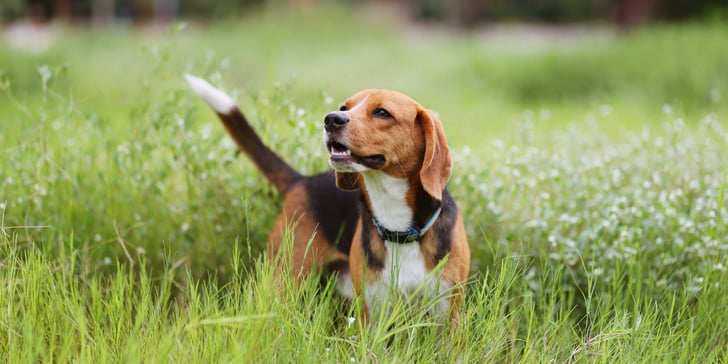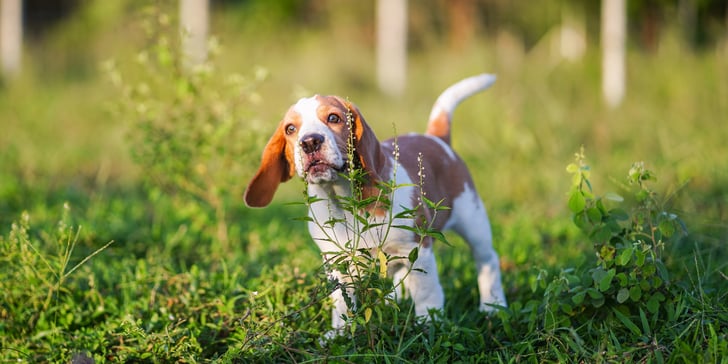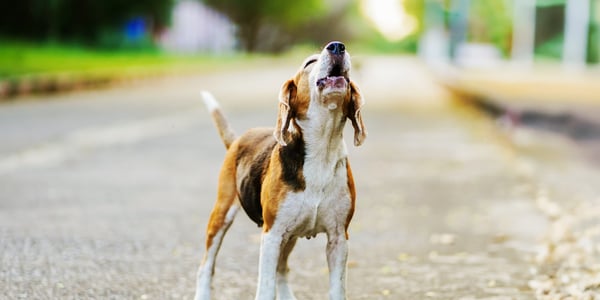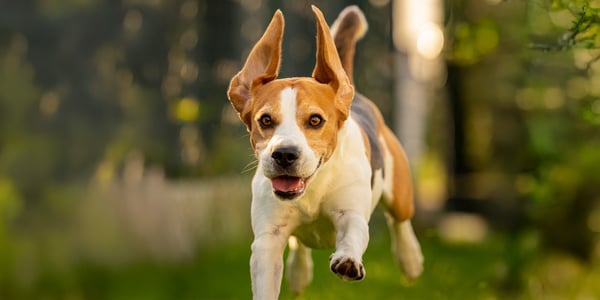Beagle Barking - Why Does This Breed Bark So Much?
Index:



Introduction
If you share life with a Beagle, you already know this cheerful dog breed can make a lot of noise. They are a classic hound with a big voice.
Many Beagle owners ask why barking can feel like a repeating soundtrack throughout their home. Let’s unpack the instincts, triggers and fixes, so you can support your Beagle dog without stress, and with more love.
Key takeaways
Beagles are a natural scent breed and a very vocal breed, so noise is in their instincts.
Understand the cues behind each dog bark to target the right fix and reduce excessive barking.
Daily outlets for their hunting instincts and smart training techniques keep sound levels sane.
Tackle specific triggers like the visiting squirrel in the garden or any nighttime routines.
Seek help early for separation anxiety, and plan for care if you need behaviour support.
Why Beagles make noise by design
Beagles sit in a group of classic hunting dogs. They were bred to track scent in packs, so when they were on the trail, they would raise a unique voice, often called a “bay".
Domestically, Beagles are known to bark and howl like a small foghorn. Compared with other dogs, they are on the more excessive end.
Beagles can bark more than others, especially when scent kicks in. That does not necessarily mean chaos at home. It just means you are living with a nose-first partner with a strong purpose.
For a comprehensive overview of history, care, and temperament, refer to our Beagle breed guide. It sets the context for why a Beagle may speak up when that nose gets busy.



What your Beagle’s barking actually says
Every sound serves a job. A sharp dog bark might say “come here”. A musical bay says, “found the trail”. A drawn-out note can be a worry.
Watch your dog’s body language. Is the tail loose or stiff? Are the ears up or back?
Learn when your Beagle will likely bark or howl. Many follow the scent, then announce what they found.
Sounds vary by context. Your Beagle’s barking at the door is not the same as important garden patrols.
For a simple primer on pitch and rhythm across breeds, read 'What Your Dog’s Barks Mean.' It could help you to decode things fast.
Everyday triggers in real life
We see familiar sparks that start barking sessions in homes with Beagles.
Movement at windows. When your Beagle sees a person or dog, many would bark as an alert.
Garden wildlife. A squirrel on the fence can flip that tracking switch. Your Beagle may bark even when a falling leaf catches their keen gaze.
Social moments. Your dog wants to play, or they want attention, so they use their voice to get your attention.
Door and garden routine. They might need to be let outside and use sound as a warning bell.
Excitement and boredom. Without outlets, some drift into constant barking. If your Beagle is barking excessively throughout the day, consider giving them more exercise and mental stimulation.
Beagles love family life. For a sense of home fit and sound levels, see 'Are Beagles good family dogs?' For a more fun read, our post on 10 interesting facts about Beagles.
We've been honest so far, and although Beagles are not known as the quietest dogs, with the right plan, your home can be calm most of the time.



Training that turns volume into signals
We can shape their vocalisations into better habits. Use reward-based training techniques that are kind and clear.
Movement and mind work
Give enough exercise for their nose and body. Add sniff walks and puzzles.
Keep daily playtime short and often. A midday walk helps many city Beagles.
Beagles thrive on scent games. This works with their strong hunting instincts.
Teach voice control
First, teach your dog to bark on cue, then teach "quiet". It sounds odd, but it works.
Use “speak” then “quiet” to bark on command, then reward silence. That way, you can stop barking kindly.
You can train your dog like this at home. Many owners find it easier to train a Beagle to speak first, then to be calm.
Manage attention-seeking cycles
Do not reward noise. Avoid pairing treats with noise. If they are barking to get what they want, you will create more of a headache.
Wait for a pause, and when your pet doesn’t bark, mark it, then reward them.
If your Beagle does not bark when the door knocks, pay them well. You can also teach a Beagle not to bark at the window by placing a mat for them to go to and rewarding calm.
Note: Please remember not to overfeed your Beagle with treats, as they are insatiable eaters. It's best to keep an eye on your pet's healthy weight.
Teach social skills early
Calm exposure helps pups learn. See our guide on socialising your puppy. It makes a big difference for a Beagle puppy to see, hear, touch, and smell the world around them.
If you want a clear, welfare-first overview of barking basics, the PDSA has a helpful page on canine noise and kind methods here: PDSA Dog Barking Advice.
Night-time noise
Late barking is common in scent-driven dogs. Check toilet needs, pain, routine, and sleep setup. It's important to always make evenings calm. Use white noise if your street is busy.
Places like Spotify offer unique white noise sounds, but you can also find them on YouTube or other streaming services.
For a complete night guide, read 'Why is my dog barking at night?' You can also try a covered crate or kennel space if your dog finds that safe and cosy.



Tools and when to get help
You may be curious about bark collars. Many people think that this is the key to training their dog; however, we do not recommend it. Aversive tools can raise stress in dogs and instead teach fear.
They risk masking the sound while the feeling remains. Look instead at management, exercise, and coaching.
If you are a Beagle parent with your first Beagle, you may need support. House type, schedule, and the presence of neighbour dogs and people all play a role.
An old Beagle may also change their vocalisations when their hearing is affected with age. A young Beagle puppy needs routine and love more than strict rules.
When sound links to pain, gut issues, or itchiness, your vet should be the next stop. Behaviour help is a wise plan for dog owners who want lasting change.
Insurance can help cover behaviourist care if referred by your vet. Learn more about the ins and outs of pet insurance.
We also like this enrichment piece from the RSPCA with free ideas to keep them occupied.
Quick reference: common Beagle sounds and fixes



Putting it all together
If you’ve made it this far, you’ve already got the right mindset, doing everything to help your Beagle live a balanced, happy life while keeping the peace at home.
Here’s a simple plan you can start this week:
Morning: Take your Beagle on a scent walk with varied routes, then spend five minutes practising a calm “settle.”
Midday: Offer a puzzle feeder to engage their mind, followed by a short walk to stretch their legs.
Evening: Let them enjoy some garden time after a nose game. Practise a couple of minutes of “speak” and “quiet” to keep those cues sharp, helping your Beagle learn that silence can earn rewards too.
Night: Finish with a toilet break, fresh water, and a quiet wind-down before bed.
And finally...
Beagles are adored for their humour, warmth, and boundless curiosity. They do best when life feels structured, fair, and fun.
Never forget the voice that makes this breed so distinctive. A Beagle’s call, that joyful “bay”, is part of their charm. On a trail, it’s music. At home, it’s about turning that music into good manners with patience and consistency.
Waggel Pet Insurance
Need more help? You're in luck if you're a Waggel Pet Insurance member. Along with our excellent coverage, we offer access to a 24/7 online vet to answer all your sticky questions, especially if you need grooming assistance.
Not a member? Why not get a quote now and cover your furry friend for a range of illnesses, all while enjoying our amazing perks and rewards.
Want more like this?
Get updates from us with helpful info, advice, answers to frequently asked questions and much more.
Index:
Related posts:
Get your quote
Along with our excellent coverage, we offer access to a 24/7 online vet to answer all your sticky questions.





